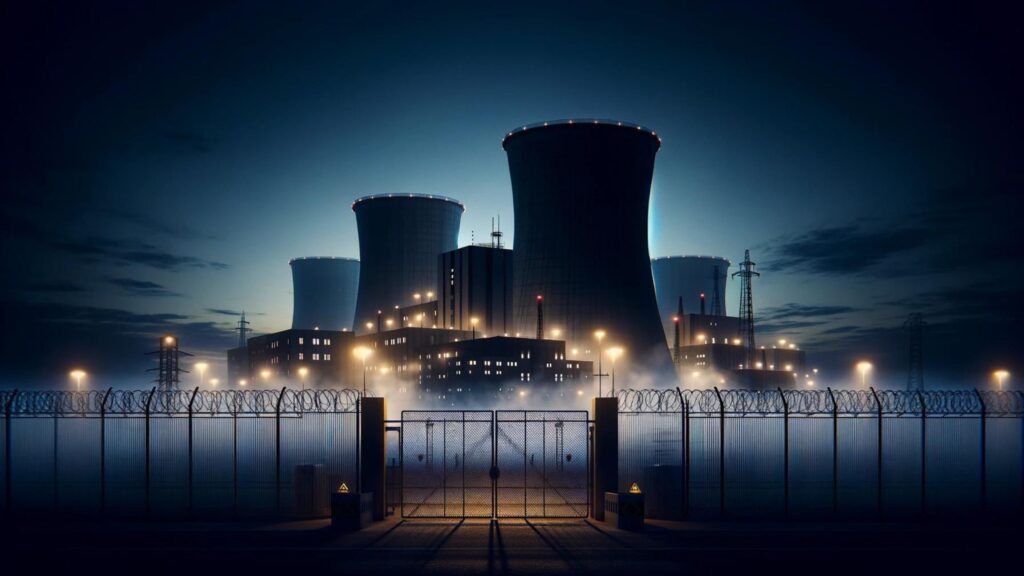Imagine if the hum of nuclear plants across the U.S. was not just about power generation but a front for something more extraordinary. ‘The Secret Alien Tech Hidden in Nuclear Plants: The Hidden Truth’ delves into the startling theory that these facilities might be the stage for top-secret alien technology research. Strap in as we unravel a narrative that blurs the lines between science fiction and covert reality.
The Hidden Agenda: Are Nuclear Plants a Facade for Alien Technology Research?
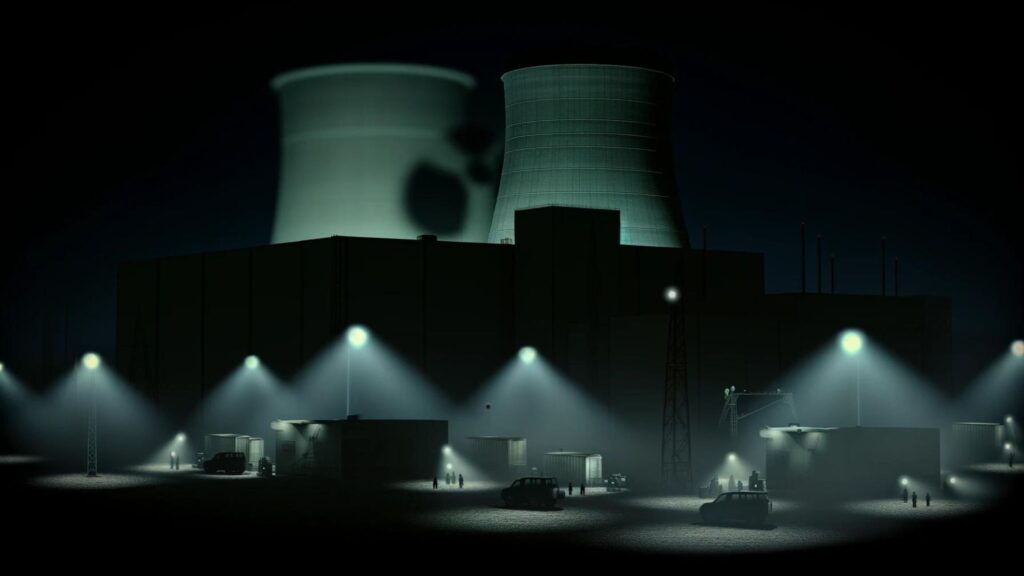
Introduction: Unraveling the Mystery
Now, we delve into the intriguing theory that the U.S. government might be using nuclear plants not just for energy production but as a clever facade for conducting research on alien technology. This theory suggests that what appears as standard nuclear facilities might actually be housing and experimenting with extraterrestrial discoveries hidden in plain sight.
Nuclear Plants: The Ideal Cover?

In exploring the theory that the U.S. government might be using nuclear plants as a facade for alien technology research, it becomes apparent that these facilities could indeed provide the perfect cover for such secretive operations. This section delves into the aspects that make nuclear plants potentially ideal for this purpose, considering their unique characteristics from a perspective that lends credibility to the theory.
Strategic Location and Inherent Security
- Remote and Secure Sites: Many nuclear plants are situated in remote locations, away from dense population centers. This geographic isolation provides a strategic advantage for conducting confidential activities. The secluded nature of these sites makes them less accessible to the public and media, thereby reducing scrutiny.
- High-Level Security Measures: Nuclear plants are inherently equipped with stringent security protocols, including restricted airspace, guarded perimeters, and surveillance systems. These measures, ostensibly for safety and anti-terrorism purposes, could also effectively shield covert operations from prying eyes.
If you’re interested in learning more about the intricate details and significance of the Special Access Program (SAP), I recommend reading my in-depth article on this topic here.
Infrastructure and Technological Capabilities
- Advanced Technological Facilities: Nuclear plants possess sophisticated technology and infrastructure. This high-tech environment could be conducive to researching and experimenting with advanced alien technologies, offering the necessary tools and resources for groundbreaking scientific work.
- Energy Supply for Research: The immense power generated by nuclear reactors could be a critical resource for conducting energy-intensive experiments associated with alien technology, far beyond the capabilities of standard research facilities.
Government Oversight and Restricted Access
- Direct Government Involvement: The government’s involvement in the regulation and oversight of nuclear facilities provides a plausible framework for covert operations. This official connection could facilitate the discreet integration of alien technology research into the plant’s operations.
- Limited Public Access and Information: Due to national security concerns, nuclear plants operate under a veil of secrecy with limited information disclosure. This environment of restricted access and controlled information is ideal for concealing activities that are not meant for public knowledge.
Precedents in Concealing Sensitive Projects
Historical Examples of Hidden Projects: The U.S. government has a precedent for concealing sensitive projects in plain sight. For instance, the Manhattan Project during World War II was shrouded in secrecy, with entire towns and facilities built for the sole purpose of developing the atomic bomb. Such historical instances lend plausibility to the idea that nuclear plants could serve a dual purpose today.
The Plausibility of Dual-Use Facilities
Feasibility of Covert Research: Considering the high security, advanced infrastructure, and direct government control, it is entirely feasible that nuclear plants could simultaneously function as research centers for alien technology. This dual-use nature would allow for groundbreaking research to occur without attracting undue attention or speculation.
In conclusion, the unique characteristics of nuclear plants make them an ideal candidate for concealing highly secretive and advanced research projects, including those related to alien technology. The combination of strategic location, inherent security, advanced infrastructure, and government oversight creates a plausible scenario where nuclear plants could indeed serve as more than just power generation facilities. This perspective opens up intriguing possibilities and warrants a deeper investigation into the true nature of activities within these enigmatic installations.
For those intrigued by the mysteries of unidentified anomalous phenomena, I highly recommend reading my thorough analysis of the Department of Defense’s report on the subject. Gain deeper insights and perspectives by exploring the article here.
Historical Precedents and Patterns
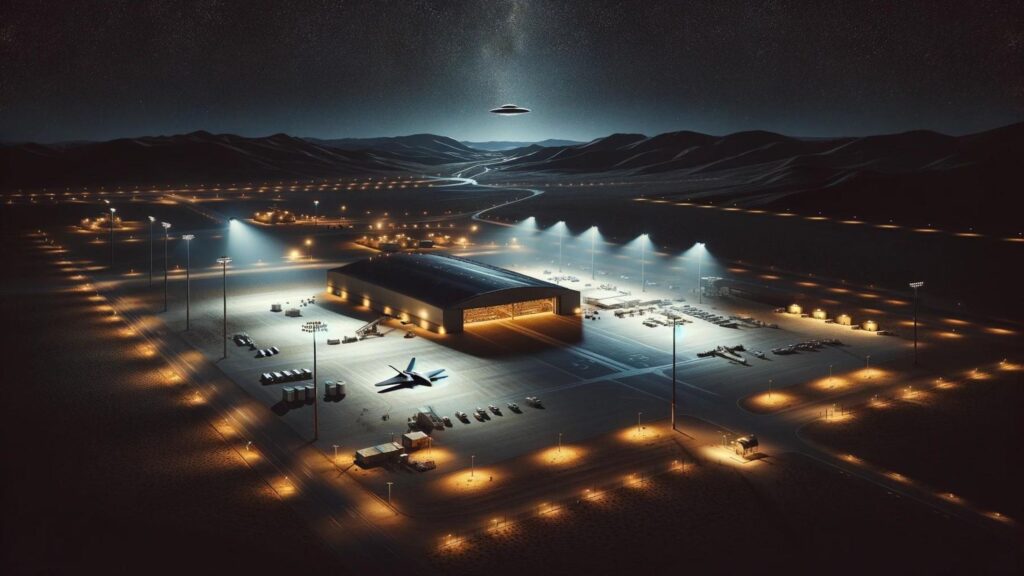
The theory that nuclear plants might be used as a cover for alien technology research gains further credibility when we examine historical precedents and patterns. The U.S. government’s track record of conducting secretive projects under the guise of ordinary operations provides a compelling context for this hypothesis. This section explores various historical instances and patterns that suggest the possibility of hidden agendas behind seemingly normal operations.
Past Government Projects in Disguise
- The Manhattan Project: One of the most notable examples is the Manhattan Project, which was cloaked in utmost secrecy during World War II. Entire towns, like Los Alamos, New Mexico, were built discreetly to facilitate the development of the atomic bomb. This demonstrates the government’s capability and willingness to undertake massive secret projects under a civilian facade.
- Area 51 and Stealth Technology: The existence of Area 51, a highly classified remote detachment of Edwards Air Force Base, was officially acknowledged only in 2013, despite long-standing public speculation. Known for its development of stealth technology, this site exemplifies how advanced scientific research can be conducted away from public scrutiny.
Patterns in Concealing Technological Advancements
- Cold War-Era Spy Satellites: During the Cold War, spy satellites and surveillance projects were often hidden within civilian or less sensitive military programs. This tactic was used to mask the true nature of these projects from both the American public and foreign adversaries.
- The Star Wars Program: The Strategic Defense Initiative, colloquially known as the Star Wars program, involved research in futuristic technologies like directed-energy weapons. Much of this research was conducted under high secrecy, with only scant details released to the public.
Recurring Themes in Government Secrecy

National Security Concerns: Often, the veil of secrecy is justified by national security concerns. Projects related to nuclear technology, aerospace defense, and advanced weaponry are typically shrouded in confidentiality, citing the need to protect sensitive information from potential adversaries.
Public Discovery and Disclosure: Many previously classified projects have come to light years after their inception, revealing the extent of government secrecy. The gradual declassification of documents related to these projects often validates long-held public suspicions.
Non-Disclosure Policies and Security in Nuclear Facilities
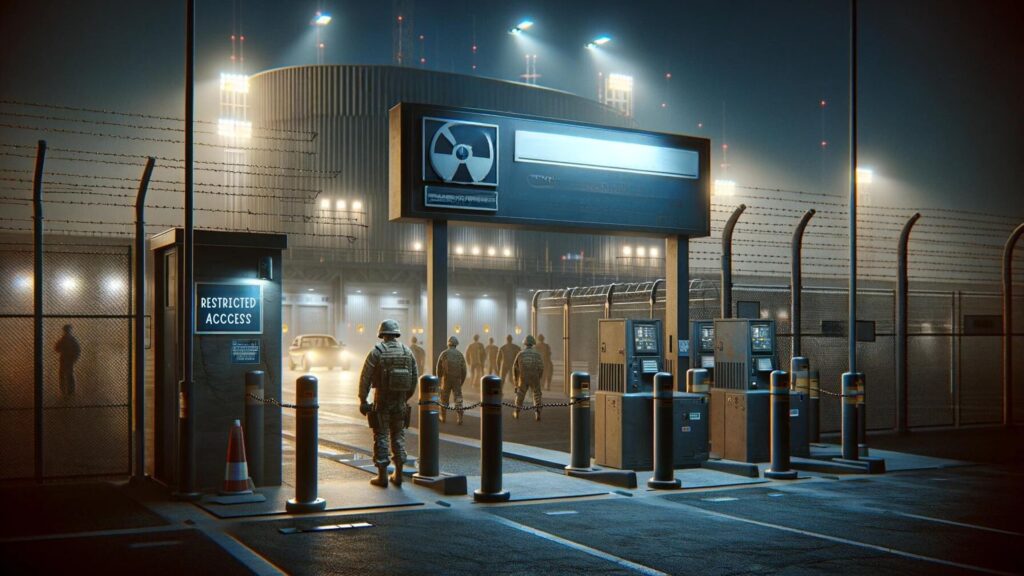
The theory that nuclear plants could be fronts for alien technology research gains plausibility when considering the stringent security measures and non-disclosure policies prevalent in these facilities. These practices, essential for concealing high-stakes research, align well with the requirements for keeping such extraordinary activities under wraps.
The Culture of Secrecy in Nuclear Facilities
- Rigorous Security Measures: Nuclear plants are known for their tight security, including guarded perimeters, surveillance, and restricted access. This level of security is not only for safety against potential hazards or terrorism but also ideal for hiding sensitive research.
- Non-Disclosure Agreements (NDAs): Employees and contractors working in nuclear facilities often sign NDAs, legally binding them to confidentiality. These agreements are standard for protecting nuclear secrets but could also effectively conceal non-nuclear-related covert operations.
Evidence from Declassified Documents
- Governmental Secrecy Practices: Declassified documents from various government agencies have historically revealed a pattern of secrecy and misinformation strategies, especially concerning matters of national security or advanced technology.
- Cases of Hidden Projects: Examples include the Manhattan Project and Area 51, where groundbreaking technology and research were conducted away from public knowledge. Such precedents provide a factual basis for the potential of similar practices in contemporary nuclear facilities.
Comparisons with Other Secretive Sites
- Similarities with Military Black Sites: The secrecy surrounding nuclear plants can be compared to that of military black sites, which are known for hosting clandestine operations. The parallel in operational secrecy strengthens the theory of nuclear plants being used for similar undisclosed purposes.
- Lessons from Aerospace and Defense Research: Facilities involved in aerospace and defense, like the Skunk Works, have maintained secrecy around their projects for decades. This culture of concealment could be mirrored in the operations of nuclear facilities, especially if involved in research beyond their publicized purpose.
In conclusion, the non-disclosure policies and tight security protocols at nuclear facilities provide a suitable environment for secret operations, including potential research into alien technology. The historical precedents of government secrecy, along with the parallels in security measures with other clandestine sites, lend credence to the theory that nuclear plants could be more than what they appear on the surface.
Implications for the Nuclear-UFO Theory

Feasibility Based on Historical Context: Given the historical precedence of secret government projects, the idea that nuclear plants could double as research facilities for alien technology is not far-fetched. This theory aligns with the established pattern of using high-security, technologically advanced sites for covert operations.
Public Awareness and Speculation: Just as with past secret projects, public awareness and speculation often precede official acknowledgment. The persistent rumors and theories surrounding nuclear plants and UFOs could be indicative of a deeper truth yet to be disclosed.
In summary, historical precedents and patterns of government secrecy, particularly in the realms of nuclear technology and advanced research, lend a substantial degree of plausibility to the theory that nuclear plants could serve a dual purpose as sites for alien technology research. This historical context provides a foundation upon which the nuclear-UFO connection can be further explored and potentially understood.
For a comprehensive understanding of dark matter, an elusive yet fundamental component of our universe, feel free to delve into my detailed exploration of the subject here. This article provides in-depth insights into what dark matter is and why it’s crucial in the study of astrophysics.
As an Amazon Associate, I earn from qualifying purchases. This statement is to inform you that some of the links provided in this content are affiliate links. If you make a purchase through these links, I may receive a commission at no extra cost to you. This does not influence our editorial content, and the opinions expressed here are our own.
In Plain Sight: An investigation into UFOs and impossible science
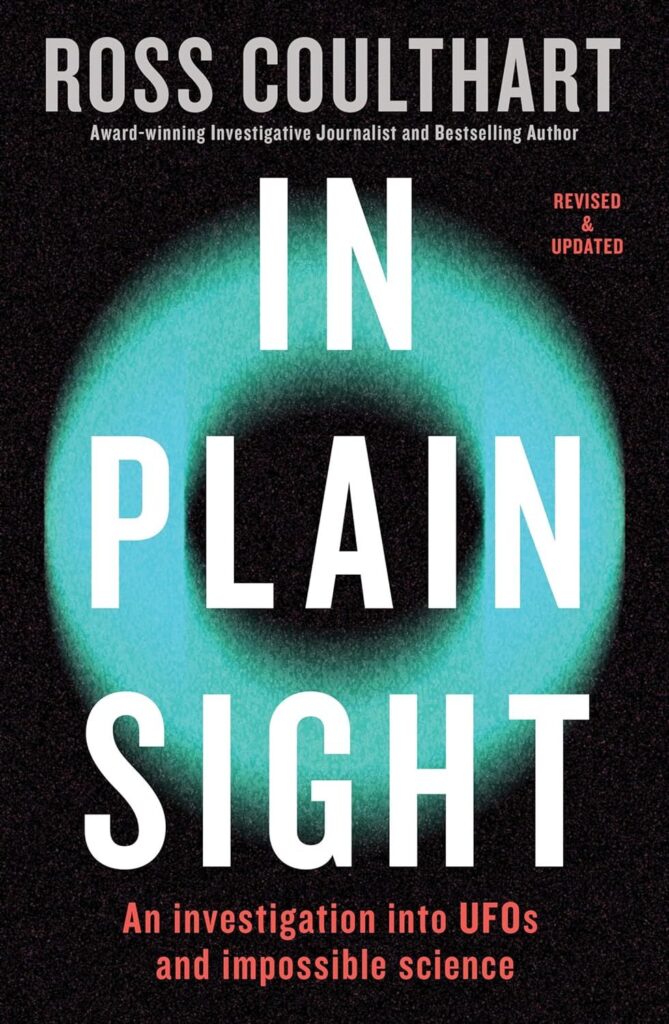
“In Plain Sight: An Investigation into UFOs and Impossible Science” is a riveting exploration that plunges into the enigmatic world of UFOs. Ross Coulthart, an award-winning journalist, embarks on a compelling journey, challenging the boundaries between science and the unexplained. His dogged investigation, fueled by childhood intrigue and fortified by the US Department of Defense’s 2020 admission of unexplained aerial phenomena, brings an unprecedented level of credibility to the subject.
Coulthart’s approach is meticulous, blending eyewitness accounts with insights from scientists, defense officials, and intelligence insiders. He navigates through a labyrinth of conspiracy and truth, aiming to unearth the reality behind decades of sightings and encounters. This book stands out in its genre, not just for the depth of its investigation but also for Coulthart’s journalistic rigor and the tangible sense of urgency that propels the narrative.
For anyone intrigued by the unknown, “In Plain Sight” offers a persuasive argument that we might not be alone. It’s a must-read that transcends typical UFO literature, inviting skeptics and believers alike to consider the possibilities that lie beyond our current understanding.
